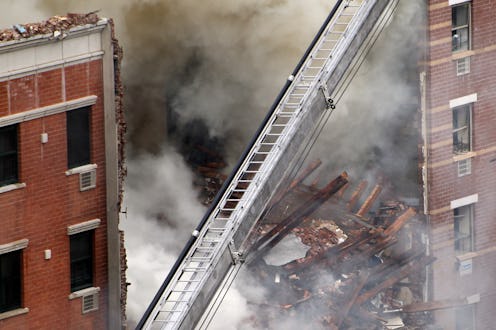News
Just How Common Are Gas Leak Explosions?
Wednesday's news of a horrific gas explosion and building collapse in East Harlem raises a familiar, if oft-overlooked concern: Just how susceptible are aging infrastructures to these kinds of disasters? In short, just how worried should we be about gas explosions?
Unfortunately, there isn't a definitive, centralized means to get all the available data at once, according to Frank Gallagher, editor of Natural Gas Watch, which collects local news of gas-leak incidents. "Each municipality and each state has their own set of numbers. There’s no central clearinghouse of data."
But the short, sensible answer to whether there's a concern is yes: An average of 27 serious gas-leak incidents occur in the U.S. each year, killing nine people annually and injuring 45 more.
Those figures aren't very striking when measured against the total U.S. population, to be sure. By comparison, that's less than the average number of lightning deaths. But when they do happen, these explosions can reap many lives at once, as well as heavy property damage costs. For example, the infamous gas-leak explosion that shook San Bruno, California in 2010 killed eight people and destroyed 37 homes.
Age of infrastructure must rank as the biggest area of concern. Over 12 percent of the roughly 2.5 million miles of America's gas and oil pipelines were built before 1950, and when such systems age, they invariably become weak and prone to leaks. A November 2012 study on the city of Boston's gas lines found a staggering 3,300-plus leaks or faults, six of which were beyond the level at which an explosion could occur.
A similar study of Washington, D.C. found over 6,000 such leaks — 12 of which had reached a potentially explosive degree.
And here's the biggest potential problem: We're in a modern political climate that's enamored with natural gas as an energy solution. Frequently hailed as a stopgap energy source between fossil fuel and newer, greener technologies, about one-quarter of America's total energy needs are currently supplied through natural gas pipes.
If you're living in California, Louisiana, or Texas this might be worth a call to your state representatives: Those states suffer the most incidents, owing to their highest mileages of total pipelines.
